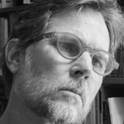
Le Corbusier's early education encouraged him to think of architecture in idealistic and metaphoric terms: architecture not as building, but as representation. Schooled in the neomedieval beliefs of John Ruskin and Owen Jones, and in the organic similes of art nouveau, he was convinced that art and industry, like art and craft in former times, ought naturally to ally. For Le Corbusier, a building was always like something else. His La Chauxde- Fonds houses were like the nature that surrounded them, with their roofs designed as curves and folded gables to echo the shape of local ftr trees.1 The Salvation Army building was like a beached ocean liner, the Unites like ftling cabinets or wine racks. Continuous ribbon buildings projected for Rio de Janeiro and Algiers were like bridges or aqueducts or even like the Great Wall of China, and the polychrome Nestle Pavilion was like a collage painting into which the viewer could walk.
Available at: http://works.bepress.com/daniel_naegele/9/

This article is from Harvard Design Magazine 15 (2001): 4–13. Posted with permission.